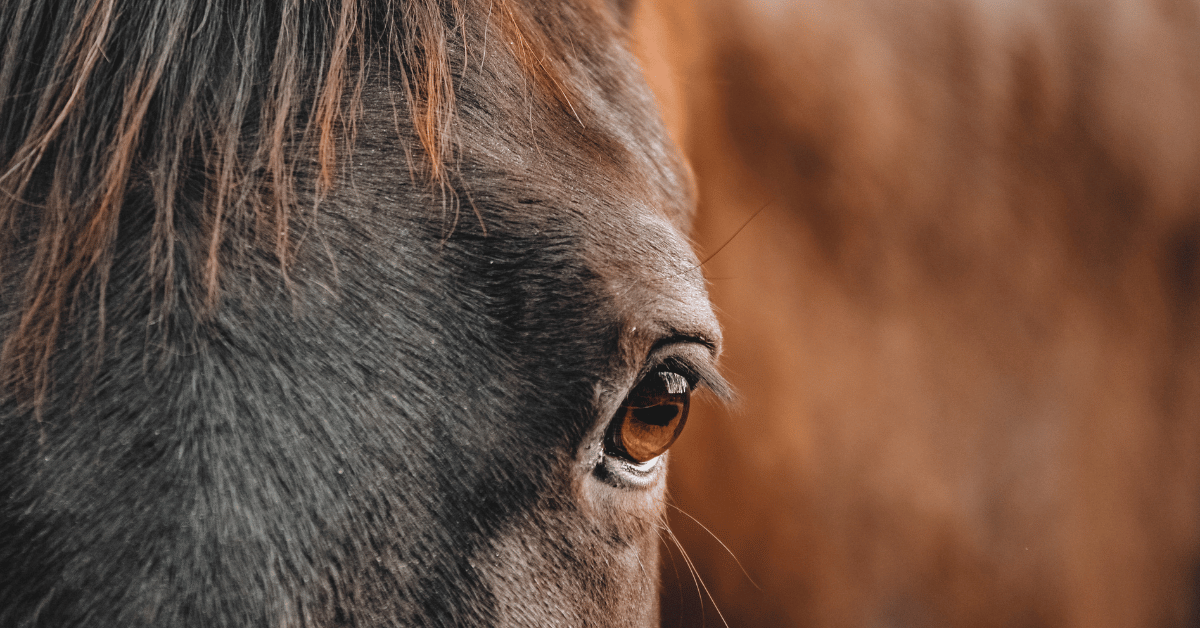Stress Signals in Horses: How Do You Recognize Them?
Horses are prey and flight animals. When something changes in their environment, they quickly become alert or stressed. This can affect how we interact with them, their health, and safety. So how do you recognize stress in horses? In this article, you will learn more about the background and what you can do yourself.
Stress
Welfare

27 November '25 • 2 min reading time
Where welfare once meant “the absence of pain and discomfort,” the definition today is much broader and includes the question: Does the animal feel well? Mental health in horses is receiving increasing attention. Various researchers have tried to describe how we can recognize whether a horse feels mentally good or bad. That’s not easy. While there are lists of possible stress signs—such as showing the whites of the eyes, tail swishing, or ears pinned back—not all are scientifically confirmed. Still, there’s a lot horse owners can do to reduce stress.
Stereotypical behaviour
A clear sign of poor mental welfare is stereotypical behaviour—repetitive actions that horses use to calm themselves during stress. Examples include cribbing or weaving. These behaviours usually arise from chronic stress. Even when the cause has disappeared, the behaviour may continue out of habit, making interpretation difficult. Common stereotypical behaviours are often linked to poor management: long stall confinement, little turnout, limited social contact, and insufficient forage. Less obvious stereotypical behaviours exist too, such as frequent lip-licking or repetitive subtle head movements. If a horse suddenly develops such behaviour, something is definitely wrong and the cause must be found.
Apathetic behaviour
Apathetic behaviour—barely reacting to stimuli—is another clear stress signal. For example, when ridden: if a horse stops responding to aids, this may indicate pain (e.g., a poor saddle fit) or mental distress caused by lack of social contact or miscommunication. Even in the herd, an apathetic horse reacts less strongly to environmental triggers. Recognizing this can be challenging. Often, once a horse is successfully treated, owners notice that their previously “bombproof” horse suddenly has more spirit again—because the apathy was stress-related. A mentally healthy horse reacts to its environment, even if subtly. Lack of curiosity can even indicate pain.
Subtle signs of stress
Most horses aren’t apathetic and don’t show obvious stereotypical behaviour. Their stress signs are more subtle—easy to overlook. These subtle behaviours are often called calming signals. Horses use them to de-escalate situations, for example by turning their body away or avoiding direct eye contact. You can also apply this in training—having someone stand between the horse and a scary object can reassure the horse, allowing it to approach gradually.
Recognizing signals
Horses experience the world differently than we do: they see differently, have stronger senses of smell and hearing, and can even detect human emotions. Horses exposed to the scent of a fearful person were more alert and sought more physical contact with familiar humans. Stress can be reduced simply by allowing a horse to look at something instead of restricting its head.
Influence of humans
Our own mental state strongly affects our horse. Horses can adopt our stress, anxiety, tension, and increased heart rate. That’s why your horse reacts differently when you’re nervous at a show, distracted in training, or overstimulated. Horses also remember when you have been angry or scared. Trust builds slowly—but disappears quickly. So breathe deeply before working with your horse. Start from a calm state. Horses feel safer and respond better when you project calmness and confidence.
Sources
Merkies, K.; Franzin, O. Enhanced Understanding of Horse–Human Interactions to Optimize Welfare. Animals 2021, 11, 1347. https://doi.org/10.3390/ani11051347
Lesimple, C. Indicators of Horse Welfare: State-of-the-Art. Animals 2020, 10, 294. https://doi.org/10.3390/ani10020294
Book: Kalmerende signalen van paarden door Rachael Draaisma.
.png)

